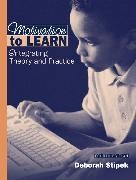Read more
List of contents
1. Profiles of Motivational Problems.
2. Defining and Assessing Achievement Motivation.
3. Reinforcement Theory.
4. Social Cognitive Theory.
5. Cognitive Theories Applied to Achievement Contexts.
6. Perceptions of Ability.
7. Maintaining Positive Achievement Relation Beliefs.
8. Intrinsic Motivation.
9. Values and Relationships.
10. Goals.
11. Maximizing Intrinsic Motivation, Academic Values and Learning Goals.
12. Achievement Anxiety.
13. Communicating Expectations.
14. Real Students, Real Teachers, Real Schools.
Appendix 2-A: Identifying Motivation Problems.
Appendix 3-A: External Reinforcement.
Appendix 3-B: Observations of Teachers' Use of Praise.
Appendix 7-A
Appendix 11-A: Evaluating Your Tasks.
Appendix 11-B: Evaluating Your Evaluation.
Appendix 11-C: Evaluating Control.
Appendix 12-A: Strategies for Reducing Safety.
Appendix 13-A: Teacher Efficiency.
Appendix 13-B Questions for Teachers to Ask to Help Them Monitor Behavior Toward High- and Low-Achievers.
References.
Summary
Stipek (education, Stanford U.) provides a clear discussion of motivation theories and research and their implications for educational practice. Emphasizing classroom learning, she also discusses how strategies used to motivate students in schools affect students' motivation to engage in intellectu

